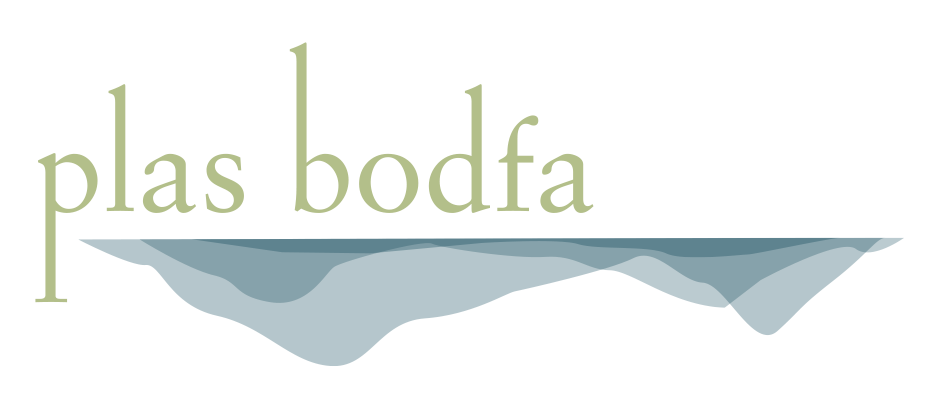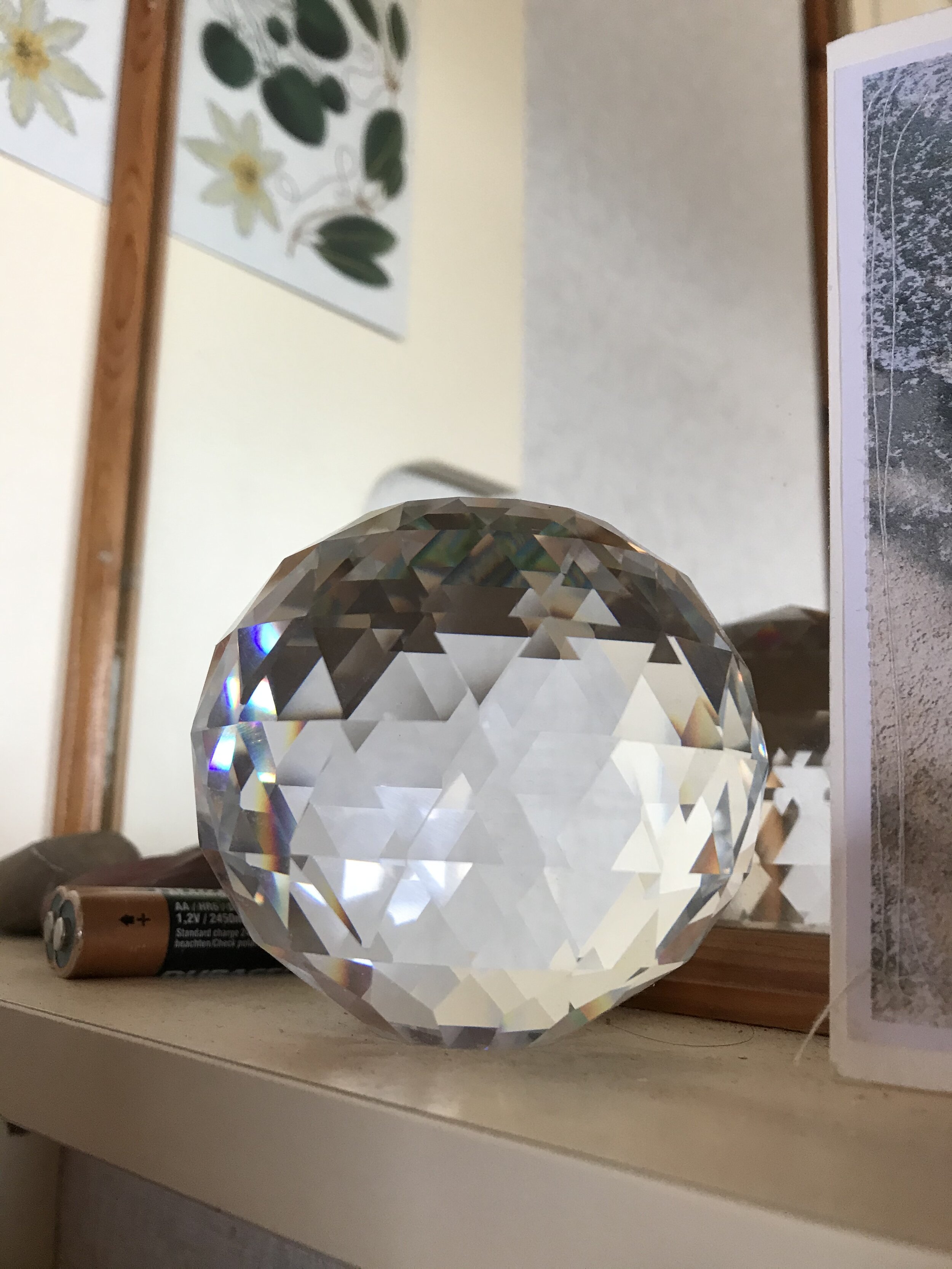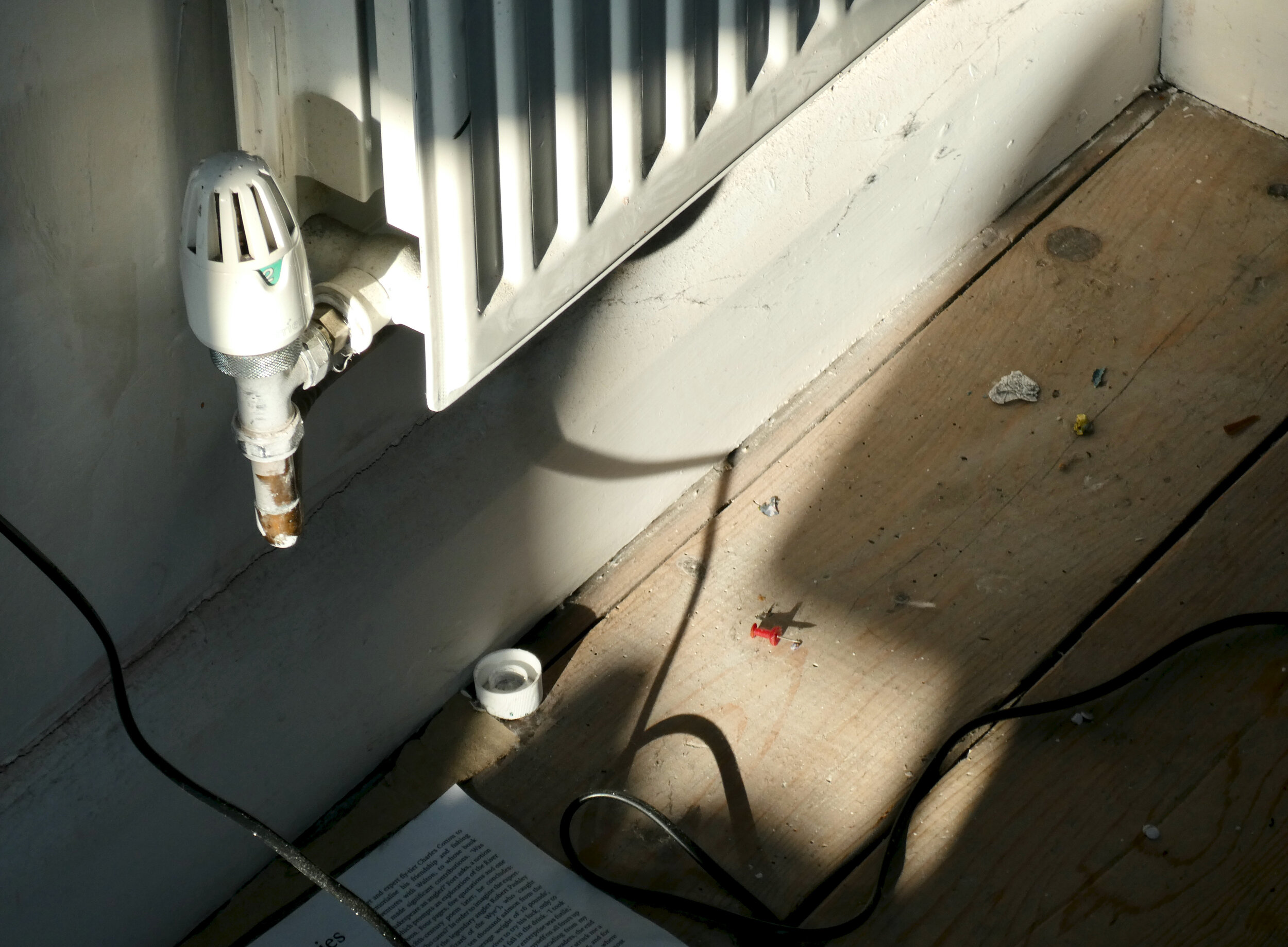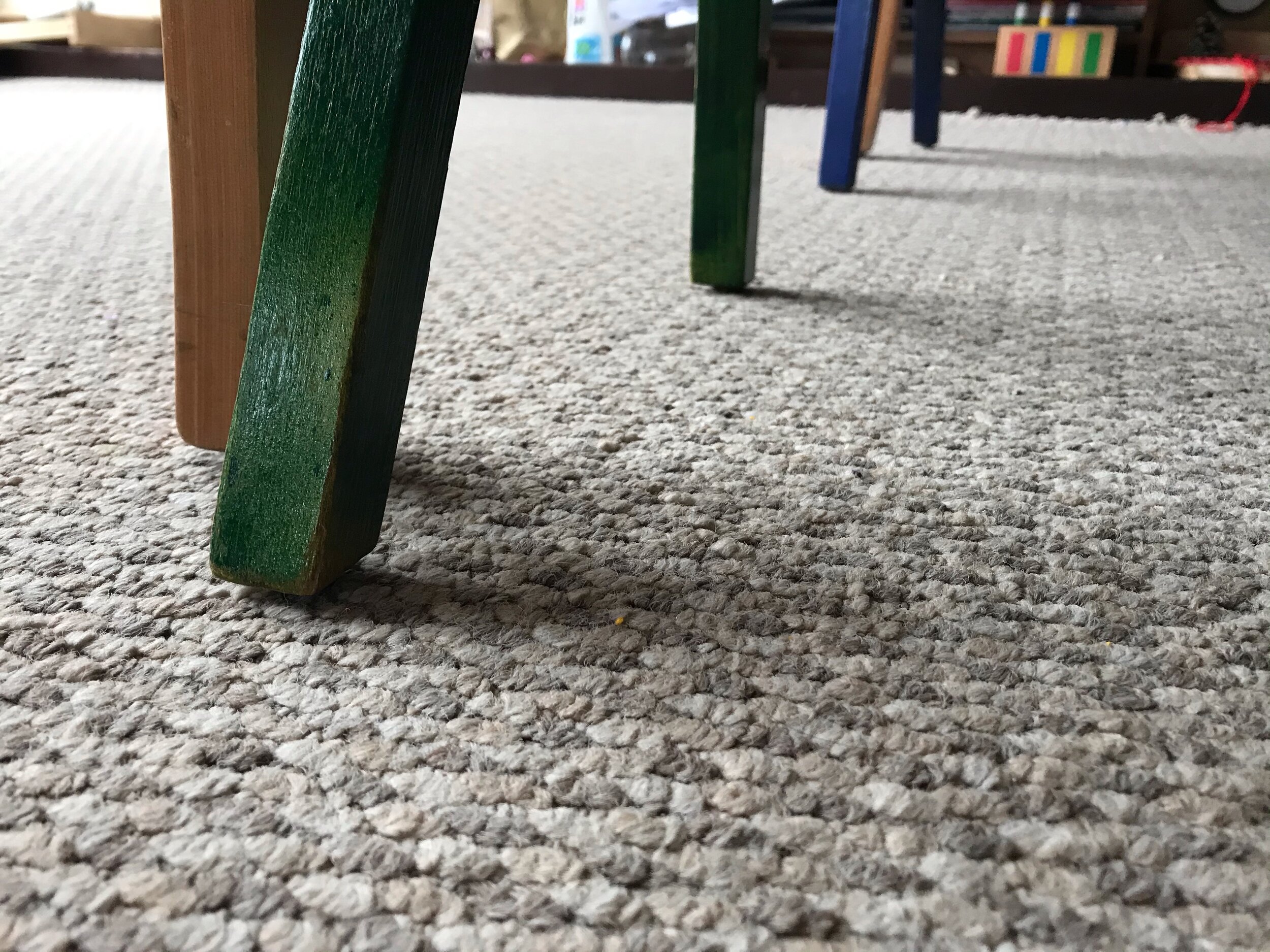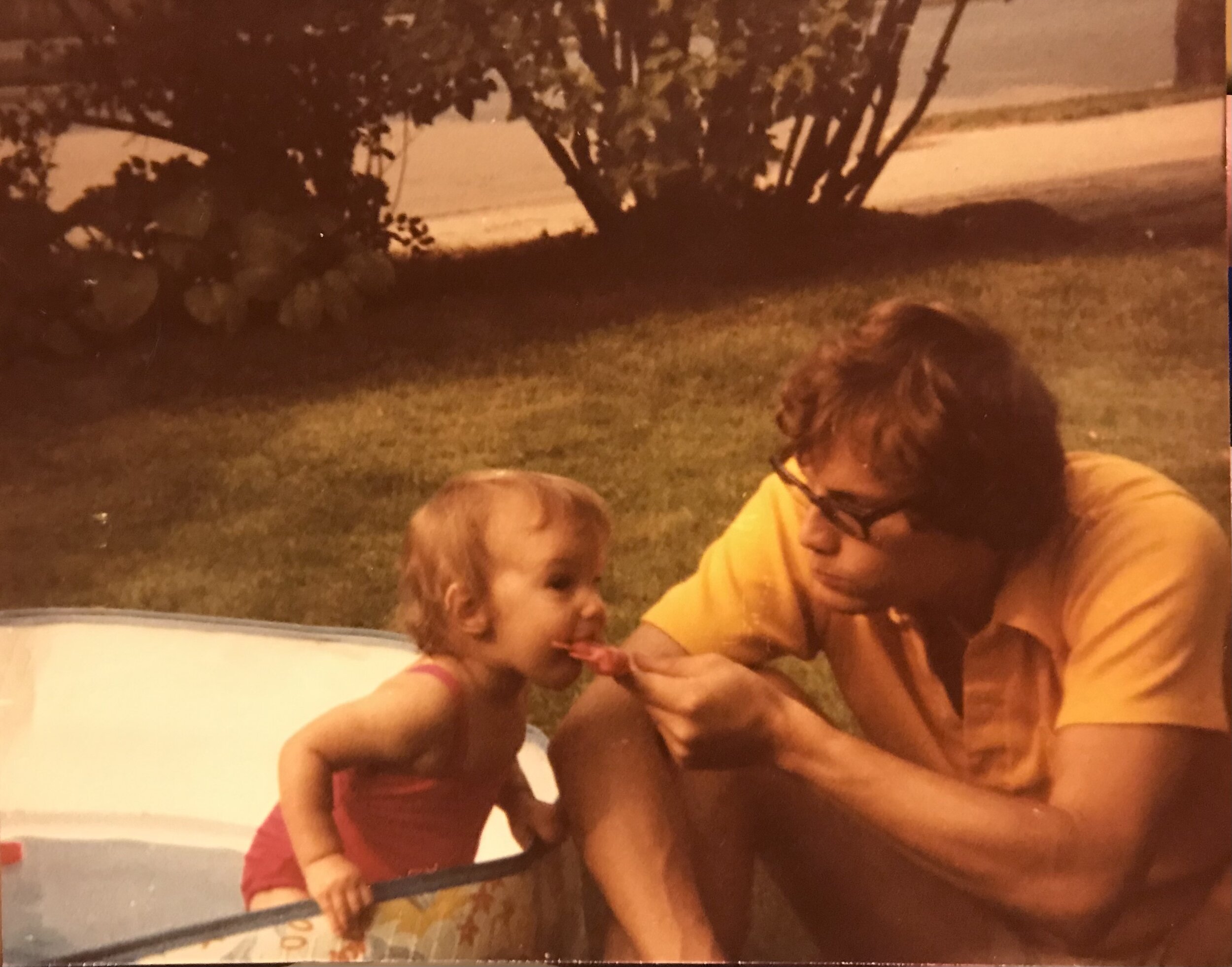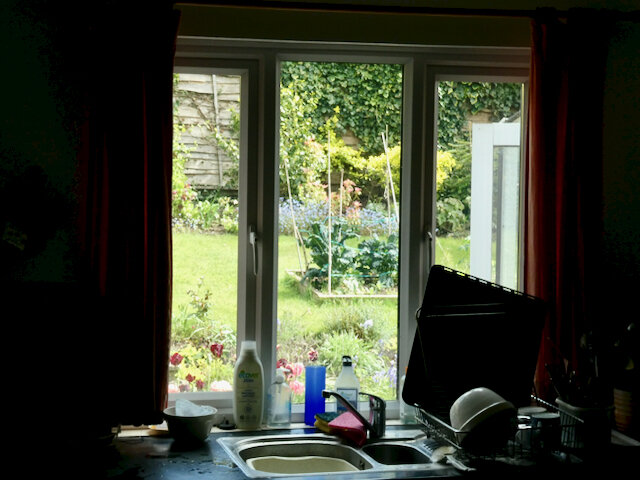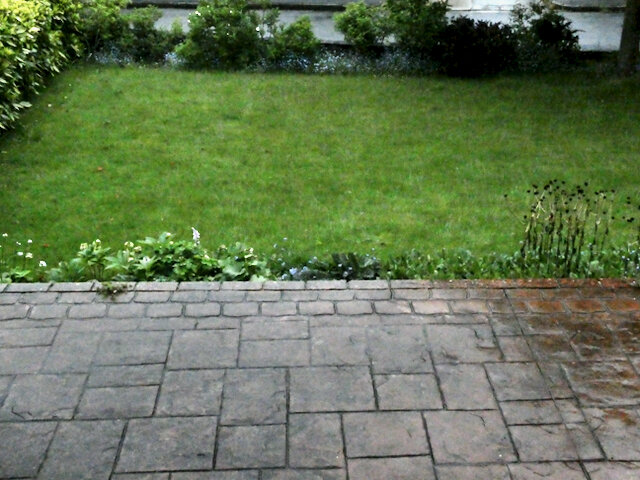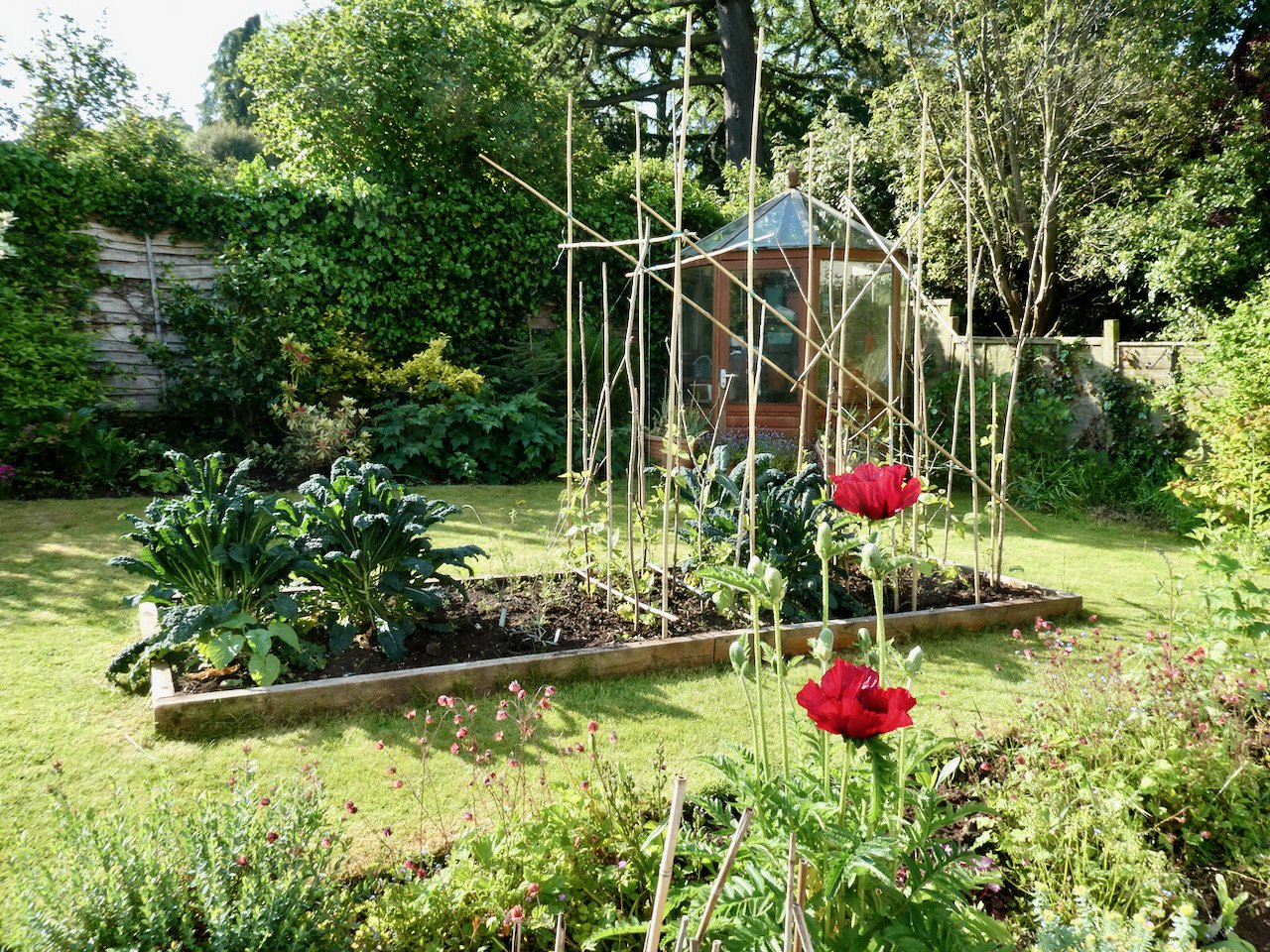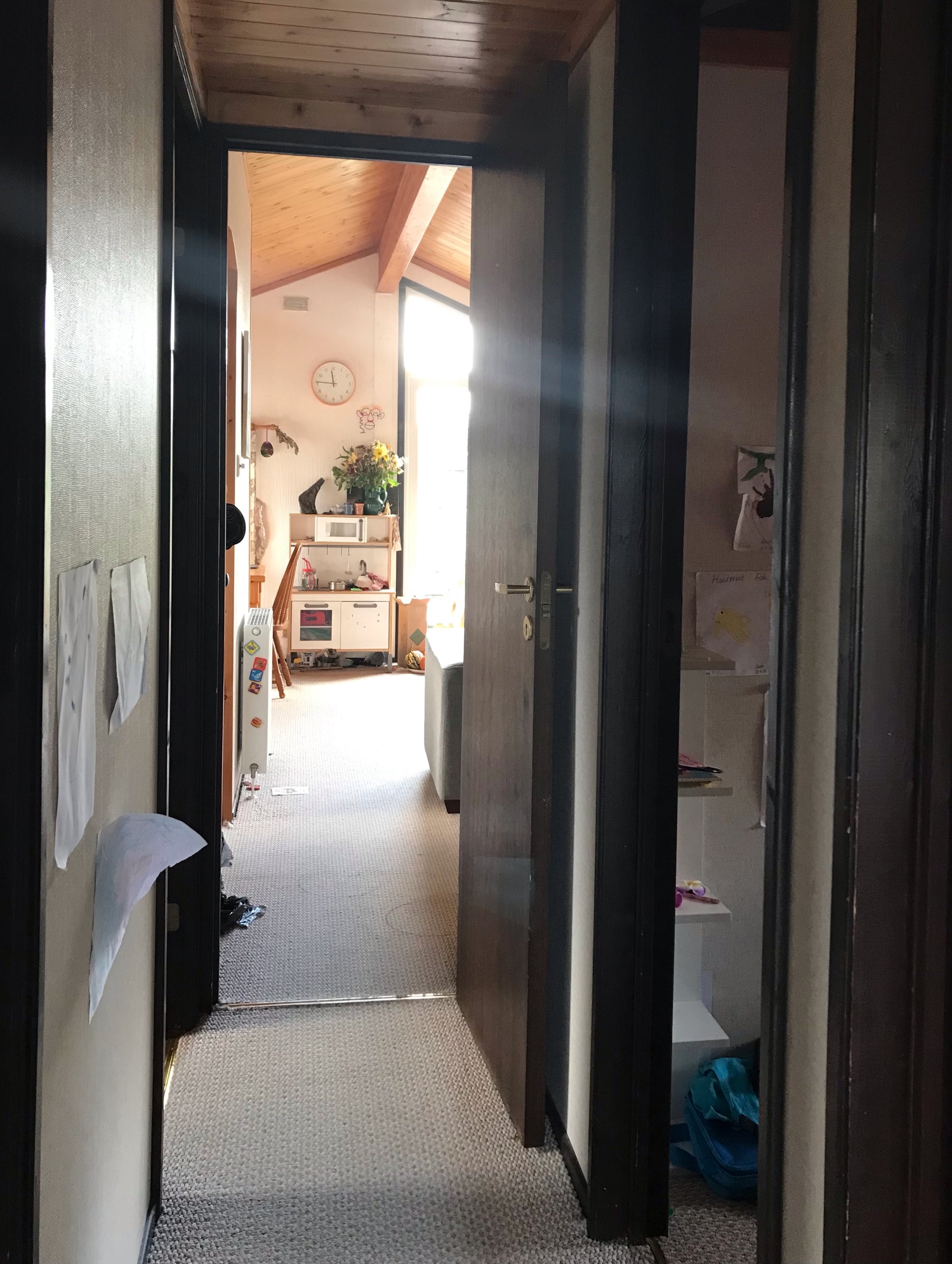Existing Entanglements
Back to Succession
Contents: a series of thoughts and realisations about a changing self, accompanied by images of mundane objects photographed in situ. The process works like this - Iain sends Julie a prompt in the form of an image with locational directions relative to the previous image. Julie responds with her own image, the content determined by Iain’s directions. Texts from both are interspersed between the image pairings.
Location: Iain’s and Julie’s immediate surroundings
Duration: since March 2021
Initiator: Iain Biggs
waxed pebble used as desk paperweight
1 March, 2021
Beyond an hour and a half’s walk and helping N. to make marmalade, the day has been nothing but routines ill-attended. Worse, several hours of a demeaning lassitude in which my mind bumped along a familiar obsessive track, but as if in neutral, leaving nothing beyond a sense of waste. Today perhaps things can be different.
I woke from dreaming with a certain lightness and a sense that, after months of inaction, there may again be worthwhile visual work I can make.
6 March, 2021
I’m more and more aware of the reality of Auden’s line: “We are lived by powers we pretend to understand”. How else to acknowledge the obscure sense of a right and proper convergence of apparently disparate, even random, ‘surface’ currents in my day-to-day life that, somehow, flow together in one overall direction just beneath the threshold of what I feel able to articulate.
fractured object yet unexhibited
twelve paces and two rooms away from the last one
morning light on the studio floor
9 March, 2021
So what kind of process is this? Or, to be more exact, how do I track the shifting processes that make up “we”, the fluid amalgam I’ve taken to calling an ‘ensemble self’? That question’s been given additional weight by a strange convergence of events; my exploring the web site for Plas Bodfa yesterday and remembering a conversation between James Hillman and Sonu Shamdasani in which the self is imagined as like a rambling boarding house.
There’s the guy who used to act as ‘front-of-house’ (best identify him ex-academic & researcher), but whose role is now changing. There’s the cook in the kitchen at the heart of the house (maybe call him wanderer/maker/talker). There are the main ‘staff’ (that’s husband, dad, householder, etc.), but what about the more shadowy ones and their interactions with ‘guests’, both the long-term residents (marginal selves, ghosts, ancestors?) or those others who just come and go like the non-humans that share the suburban cul-de-sac where I literally live; or the patterns made up of others’ thoughts, passing preoccupations, creative projects. Not to mention the twilight creatures like the wolf who first haunted my childhood dreams for so many years and later reappeared with his mate at a critical point in my life.
Why does any of this matter at a time when humanity appears, on the whole, to be walking backwards into hell and taking the more-than-human with it? A very tentative answer might be that this is what reality is like; a many-roomed house / echo-chamber / ecology. And if we can’t attend to our own ecology, keep learning about how it functions and changes, what chance do we have of really engaging with the social and environmental ecologies of which we are each only a minute and moving a part?
So this is a record of a process of paying attention that’s also a mapping; a listening to the places where our literal life and the ‘other life’ meet. The ‘other life’ that, as the Irish poet Nuala Ní Dhomhnaill writes, ‘even the dogs in the street in West Kerry know … exists’; one where constant movement ‘in and out of it … is the most natural thing in the world’. St. Bernard said: ‘If you want to see, listen’. So here’s to listening to, say, the sudden shaft of light that stops the endlessly turning thoughts in their tracks. To the particular fullness to the silence of just being here that happens when you finish reading a good poem and that’s also, somehow, a preparation for more and better listening, noticing, attending to, the world.
soft shadows from dim daylight
10 March, 2021
Under normal circumstances, my brain automatically categorises my activities and the different aspects of my life – what is useful, what is just for fun, what actions and objects I consider ‘artwork’. It is usually clear to me when I am acting as an artist or embodying my other selves of wife, mother or friend. I tended to my practice - the habitual listing of valid items on my CV, the maintenance of the projection of my career and assessment of my short and long-term goals.
But lockdown has muddled things. A huge range of mundane and repetitive activities contribute to outputs that I can’t begin to categorise. I don’t even try. Creativity, peace and boredom is spread across the days with no immediately tangible outcomes or possibility of change. As a result, I’m building abstract structures, hanging on it projects that don’t end, good intentions, conversation and small fleeting moments of satisfaction.
one pace away from the first image, but facing away from the stone paperweight, rather than towards it
Landing (Anna's stairlift)
10 March, 2021
High wind and rain have kept us inside today, but also tipped me into deciding to attend a Zoom event at the Burren College of Art in Co. Clare. It seems a good idea, once in a while, to fly blind – in this case to take up a very late invitation from a friend of a friend. Strange to be the one disembodied English presence among the fifty odd Irish and Scots attending and, as a result, to find myself so missing the west of Ireland. When I was a child people – particularly parents and teachers – regularly used to say: “I can’t be in two places at once”. That’s certainly not true in the same way it was today, and maybe it never was?
Each time my thoughts return to this Succession project, two insights that have been with me for years, like Rilke’s habits that liked him and stayed, appear somewhere in my peripheral vision.
The first came across me at some point in the mid-1990s when, killing time in a large London bookshop before an evening meeting, I picked up and thumbed through a book called Shadow of Spirit: Postmodernism and Religion. I bought the book there and then, almost entirely because of what I took to be the challenge presented by the title of a single chapter – The politics of spirituality: the spirituality of politics – written by the feminist philosopher Geraldine Finn. It contains the following observation, which has haunted me ever since.
For the contingent and changing concrete world always exceeds the ideal categories of thought within which we attempt to express and contain it. And the same is true of people. We are always both more and less than the categories that name and divide us.
If I’m ever required to justify why I have spent so much of my life in this world either working at or teaching the visual arts, I’ll probably start with Finn’s observation. One aspect of this whole process is to try and discover the ‘more and less than’ in relation to ‘the categories that name and divide us’.
The second observation is equally close to the bone of this project and comes from an essay called ‘On Paranoia’ by the analytical psychologist and writer James Hillman. He states that:
Elusive, mercurial, the unconscious is not a place, not a state, but a dark ironic brother, an echoing sister, reminding.
If, as I suggested in an earlier post, we imagine the self as a rambling boarding house that’s also somehow an echo chamber, then the voices that echo there are those of these two siblings.
minimalist’s view of a tightly packed house
one step away from the last object, facing west
the house next door
11 march, 2021
I’m sometimes told by my wife and daughter that I over-identify with Prentice, our sixteen-year-old cat. I hope this doesn’t extend to his become more insistent on getting things his way, more vocal in his complaints. I hope I’d notice.
Noticing is central here. Julie’s invitation was to entangle myself in ‘a naturally occurring process’, but noticing an entanglement and writing about it are two radically different things. Noticing (notitia) is a silent attention more alive, more present, than my normal awareness. I suspect only a poet can evoke that in words and I’m no poet.
Before starting this project I’d recently noticed that my compound self seemed to be gradually de-/re-composing. I associated this with being asked by a friend to consider how we best face the deepening global socio-environmental crisis; face questions that link personal mortality to the real possibility of impending societal breakdown and environmental collapse anticipated by Jem Bendell.
Too large a topic to contemplate here? Perhaps. But as a reluctant participant in a culture addicted to “progress” and “success”, I lack any equivalent to the Hindu view of distinct stages in human life: Brahmacharya, the student stage; Grihastha - “being in and occupied with home and family”; Vanaprastha - literally “retiring into a forest” or retirement and, finally, Sannyasa, becoming a houseless, wandering mendicant dependent on others’ charity. A difference that reminds us there is no monolithic Truth, and there are innumerable ways to face the future, if we’re willing to notice them.
view into another’s lair
11 March 2021
Lockdown number three.
Sitting by the river in the village, day after day, hour after hour. Watching the water, throwing sticks, doing push-ups on the bench, chatting with EVERYONE who crosses the bridge, in all kinds of weather. Here’s the catch – I was with my children! Instead of being labelled as crazy, I was praised as being a good mother.
The freedom of extreme limitations.
near the back door in our kitchen - that is, downstairs and some fifteen paces from where I took the last one.
cat box, with reminder, siting on the kitchen floor
a nice project, obscured by improper stain and blinding glare
17 March 2021
I’m wondering about what we usually call ‘coincidences’ when I got an email from a South African friend.
As I wrote to another friend, I’d been trying to write something about what the critical social psychologist Mary Watkins' calls "mutual accompaniment". And, just as I was getting really frustrated because I couldn’t find a simple way to explain it, the email from South Africa turned up. It contained an account of my friend’s recent experience that is as near a perfect illustration of mutual accompaniment as I could have hoped for. My other friend’s response was that: “… given there is no such thing as coincidence, it just shows the reach and power of your own mutual accompaniment”! I’m still pondering the implications of her reply.
On what may (or may not?) be an unrelated topic, I notice that my partner and I have increasingly been using a displacement strategy to reduce the inevitable stresses of being so closely cooped up due to COVID. Rather than directly criticise each other for small domestic omissions – say, putting rubbish in the wrong bin or forgetting to replace an empty toilet roll – we’ve taken to rhetorically blaming our much-loved elderly cat, Prentice. I’m now speculating whether or not this ritual transfer of blame to a scapegoat (scape-cat?) to reduce friction parallels the same mental shift as really accepting that: “there is no such thing as coincidence”?
19 March, 2021
Perhaps a 'coincidence’ / ‘mutual accompaniment’ Yesterday was the day I ‘escaped the house’ in more ways than one.
My photo response to Ian’s cat box took me outside our small chalet. I don’t think I could do 15 paces in any direction, much less from the centre of the house. A liberating gesture.
And later in the afternoon I tackled Plas Bodfa. I haven’t really spent a lot of time in the house since before Christmas. I had a bit of a block about it. I have worked from the chalet for the last two weeks since the girls went back to school. The house had too many possibilities somehow. Things I had to take care of before I could do other things. A chain of layered obligations. So in order to avoid that succession, I worked on the dining room table. Something I actually despise, preferring the freedom and control I have over the space in my studio office within Plas Bodfa.
The solution was a new vacuum cleaner. I ordered a proper industrial shop vac to replace the fake one I had struggled with for the last three years. And yesterday I did it. In cleaning each room I was able to reengage with the house and enter the space. The expanse of possibilities once more seems like an opportunity and not a threat.
Children's picnic on Bodmin Moor some time in the 1950
April 1st, 2021
There’s a rather dark irony in writing this today, on April Fool’s day, the nearest we have to a Saint’s Day for the figure of the Fool in the Tarot. The holy fool with the open heart and capacity for risk who is always setting out. The fool who calls me back to an old photograph that I should not be using here but, in his honour and because it evokes a time that is both lost and always with us, I cannot resist sharing.
Until very recently, I had allowed myself to believe that my life was changing, that one long phase was drawing to an end, or at least dying back and, I hoped, another emerging. That no longer seems to be the case. Over a period of a matter of days that supposedly ‘former’ or ‘dying back’ self has been called back by entirely unexpected requests to reanimate the teacher/researcher, and in contexts I had certainly not expected to engage with again. There is someone in me who wants to protest at the time and effort required to fulfil the obligations that have resulted from returning to that world. But there is also someone who is glad to be summonsed to use such skills and knowledge as I have in a public arena, particularly in this time of Climate Emergency. And what else would I be doing with my life? While I’m happy to carry out the usual day-to-day household duties and to help my wife in her struggle to conclude the most difficult stage of a long and demanding project, neither fulfils a particular need. The old, somewhat addictive need to apply close-focused attention to a particular and demanding task that engages both head and heart. I had hoped and expected that work in the studio would meet that need but, for whatever reason, the psychic aridity that has been one consequence of the COVID lockdown withered that hope in the bud, cutt off access to the taproot that feeds the making of images and objects.
And, additionally, I’m no longer sure that my life is my own. It’s as if the Divinities, whoever they may be, have other plans. So be it.
I think I remember this moment, but probably just because of this photograph
April 12th, 2021
And here, we momentarily diverge.
I feel separated by age, and location, and situation. I am reminded that I do not really know Iain, that we have actually never met. That I do not know his life, his tendencies, his habits or his aspirations. I have never met his wife, I don’t know their dynamic and I have no idea what her long and demanding project might be. I do not know what their household might require of him.
I try to channel something of his jolted memory and think if I have ANYTHING in our little chalet here that is from any one of my past lives. I have a book of photographs my mother put together for me a while ago, which somehow ended up in our bedroom and not in storage. Cold popsicle. Cool water. Hot, muggy Michigan summer.
Something bothered my 14-year-old self which has followed me since. In my macroeconomics class, my teacher gave us an example. There was a person who loved gardening and was very good at it. The person also had some mediocre skills as copywriter, didn’t enjoy it much, but was paid well for it. According to the principles of macroeconomics, my teacher explained, the person should focus all efforts on the copywriting, make the money, and hire someone to take care of their garden. The class erupted. What about happiness? What about a 50/50 solution? What about using copy-write skills to start a gardening business? The patient teacher explained that in order for a society to function at its peak efficiency and profit, each person within it should choose the equivalent of the copy-write job. A harsh view.
at a door out of the house
April 18th, 2021
I seem to be back where I started, with Auden’s: “We are lived by powers we pretend to understand” but, sadly, without the obscure sense of convergence between the ‘surface’ currents in my day-to-day life and an underlying direction. I plough on with the writing I feel obliged, and in some sense am happy, to do – talks and an article on an editorship held in a previous life. But there’s something else and quite different that’s pulling at me. Re-reading Doireann Ní Ghríofa’s description of her daughter’s birth in A Ghost in the Throat has me tearful and mouthing a silent prayer to the Great Mother, Mistress of the Animals, that we can all find the courage to face what we must face. And, on the back of that, I am haunted again by the passage in Paula Meehan’s Imaginary Bonnets With Real Bees In Them about the death of a girl she knew as a child at school from diphtheria.
‘Gentle Clare, with her raven black hair and her blue, blue eyes, as blue as the borage I grow in memory of all my lost ones, my bees in my bonnet. The empty space where she once sat beside me’.
I’m left with a pain in my chest and the prickle of tears behind my eyes. And, yes, I’m still smarting from the characterisation, yesterday, by an academic and virtual stranger, of my account of entering a dream museum dedicated to the Mistress of the Animals as: ‘typical of the male gaze’.
two steps out of the back door looking back towards the house
April 21st, 2021
I’m touched, and perhaps a little shamed, by Julie’s ponderings on our divergences. It feels as if, through some act of inattention, I had momentarily lost the tune and stumbled in the dance of shared life that holds us all in its embrace, whether we literally know each other or not.
My wife, Natalie, has been away a few days, six hours drive to the north, attending to her maternal inheritance, a tiny cottage in the North Pennines that was her mother’s and grandmother’s. A necessary chore prompted by an unexpected problem that is now resolved. But also a short break for her, both from her taking the larger share of caring for our disabled, forty-two year old daughter and, more importantly, from the educational film-making as a patient carer and activist that has had her preoccupied for many years now. Work that means that, most mornings, she wakes to worries about one or another of the legion of chronically sick individuals it puts her in touch with. I miss her, wake too early, but am glad to hear the lift in her voice when we speak on the phone.
I find it hard to imagine being as bereft of evidence from my past lives as Julie clearly is, although perhaps ‘bereft’ is a presumption on my part? As a family, we’ve only moved four times in fifty years. I do sometimes mourn the books I’ve given to charity shops because of reduced shelf-space, as my family sometimes mourns an old painting of mine destroyed or abandoned for lack of storage. But I now realise just how fortunate we are to have that sense of the continuity of a shared life reflected back in everyday contact with so many familiar objects used, enjoyed, and cared for over decades.
The teacher of macroeconomics to Julie’s 14-year old self troubles me too, although I’m delighted by the class’s reaction, its outrage at such a binary view. And once again, I’m struck by Lindsey Colbourne’s saying to me that there are no coincidences. For weeks now I’ve been working on a keynote presentation for a conference of post-graduate students. My central topic is the links between the Western education system and the Climate Emergency.
April 22nd, 2021
In another stroke of [not] coincidence, my husband brought up the exact same macro-economic theory in a conversation we were having about a paid work. Earning in order to pay. He was confused by my laughter at his very serious description.
Being an artist, among other things, allows me to sample and engage in all sorts of disparate activities which informs and broadens my work. I had never been able to incorporate motherhood into that jumble of experiences, it just sat alongside as a separate, big, fascinating, thoroughly engaging project. It was creative and fun, but never fed back into something I considered a part of my practice. Lockdown changed this. Suddenly we were all ‘allowed’ to have children infiltrate our professional lives. And they did! {More on this to come}
And…I do have ‘stuff’, just not ‘here’ and just not ‘now’. Some of it is at my parents house in Michigan, yet to make its way across the ocean. Some of it is in storage in Gaerwen, waiting patently after coming via container ship from Istanbul three years ago. So at some point, when the house is done, all of my past lives will convene with the current one. How joyous and overwhelming that will be!
from just inside the back door looking out of the kitchen window
May 4th, 2021
I can’t help but wonder about Julie’s saying that at ‘some point when the house is done’, there will be a time when all her past lives ‘will converge with the current one’. That’s such an evocative idea, particularly if you don’t take it literally (which, of course, is obviously how Julie does mean us to take it)! And I’m sure she’s right and that it will be a joyous and overwhelming experience when it happens.
But, given my seemingly endless capacity for not taking things literally but as prompts to acts of speculative wondering, what she writes reminds me of conversations I had with a good friend who is now living back in Ireland again. Conversations that circled around her having undertaken what I believe is called “past life regression therapy”. More specifically, it reminds me of just how disturbing some of her past lives turned out to be and how she was able to incorporate them into her current life.
Anyway, I find myself wondering how it would be to discover that, in a past life, I had been Lilas Adie, a woman condemned and executed as a witch, who was subject to a revenant burial in the intertidal, liminal zone of the foreshore by her parish. What this meant in practice was that her body was first locked in a box. This was then buried and covered with a massive, six by three foot, half ton block of sandstone, to prevent any possibility of her returning as a revenant. (A dead person who appears among the living as a flesh and blood person like themselves and the subject of much Scottish folklore and some wonderful old folk ballads). The actual site where Lilas Adie was buried also ensured that there was running water between herself and the kirk, a further precaution against her returning to call to account those who were, no doubt, responsible for her execution.
I’m left with a strong sense of the power of human fear, a topic that seems more relevant now by the day. Just how frightening must those in authority have been to go to all that trouble over the body of a dead woman?
Looking out of the front door, eleven paces from the back door
front lawn at twilight
May 12th, 2021
The rain was setting in and the light starting to go. I was about to make the family’s evening meal when Natalie called down to tell me there was a Great Green Woodpecker on the front lawn. I have fond memories of these woodpeckers searching for ants at the bottom of the garden when I was a child. But I’m still always slightly taken aback by this beautiful if strange pale green bird’s size and, in this case, her (given the lack of the red moustachial stripe on the lower cheek that’s characteristic of a male) air of slightly mechanical movement and strength. Both the hop with both feet together like a Victorian child’s toy, and the stab of that fearsome beak, both movements somehow suggestive of a very powerful clockwork mechanism. We sometimes hear them when we’re gardening or walking, but very rarely actually see them, let alone have one on the lawn probing for ants, bold as brass in the twilight.
The birds and beasts that we share this area of green suburbia with have been even more important to us during lockdown that they were before. They are a daily reminder of a multiplicity of interwoven worlds that simply go about their business as they always have, adapting to the changes around them as best they can as and when they must. So from my study window I sometimes see the magnificent fox who slips in and out of driveways into our neighbours’ gardens. The larger birds - crows, jackdaws, magpies, blackbirds, gulls and pigeons – continue to dominate the air space around us. While the song of robins and wrens haunts the bushes and overgrown fences, they only put in a personal appearance to scold or follow us about when we’re working in the garden. The occasional flight of duck, and the much rarer passing heron, remind us just how close to the river we are here.
front ramp at twilight
May 25th, 2021
I haven’t been doing very well with my contributions over here on this side…nor have I succeeded in convincing myself that its ok. But with the spring has come the inevitable tug of the garden, the greenhouse, new and ever expanding projects, REAL events with dates and….socialisation!
But this project is about creating alternate timelines, ones that do not adhere to calendars and dates and times. Engagements that unfold.
And so I insert small things.
And sometimes I write longer ones in my head and then forget them.
(Always) beginning again
October 29th, 2021
After a long and sometimes difficult summer it is good to return to this project, with its focus on entanglement in naturally occurring processes and in conversation, direct or tangential, with Julie.
The value of small, naturally occurring processes is a central topic of Rebecca Solnit’s most recent book, Orwell’s Roses. This is a rambling but always pertinent musing on George Orwell, particularly his ‘life-affirming love of gardening, of wild nature and life’s physical pleasure, his antidote to the grim puritanism of ideologies’ (as Polly Toynbee puts it). This photograph touches on such processes in a variety of ways, taken as it is from the centre of our house looking out towards the garden. (In which I spent an hour this morning cutting back the ivy that is slowly destroying the wooden fence that supports it). The photograph includes both the child-size table and two chairs, one black, one red, lent us by a neighbour whose grandchildren have outgrown it for the pleasure of our granddaughter Izzie, who has grown inordinately over the summer. It also includes our elderly cat Prentice, who now spends much of his time sleeping. These are also indicative of the small signs of growth, change, and aging, and the call they make to me as autumn deepens.
November 3rd, 2021
What is it that I’m suppose to be doing?
Expanding or contracting?
Maybe the question is indeed the answer, and the answer is not binary. I’m working towards a change in the way I think about
lifeworkmeuswespacetimeplanschildrenfuturefamilyspaceplaceproductionartworkdesigncreation
I would like to get to the point where I think of my ‘artwork’ as one of many outputs of a creative and engaged life. I’m in the process of bringing my various identities and roles and interests and projects together under a single umbrella, with less hierarchy and compartmentalisation. I want to value things more equally. And I think, without knowing it at the beginning, that is what Succession sought to do - to appreciate time as a transformative process in and of itself, a legitimate tool for creation.
This photo is taken out of the kitchen window. It's not a trick or a double exposure! A pigeon had just flown into the window and left this strange "ghost" image - perhaps it was just a very dusty pigeon?
